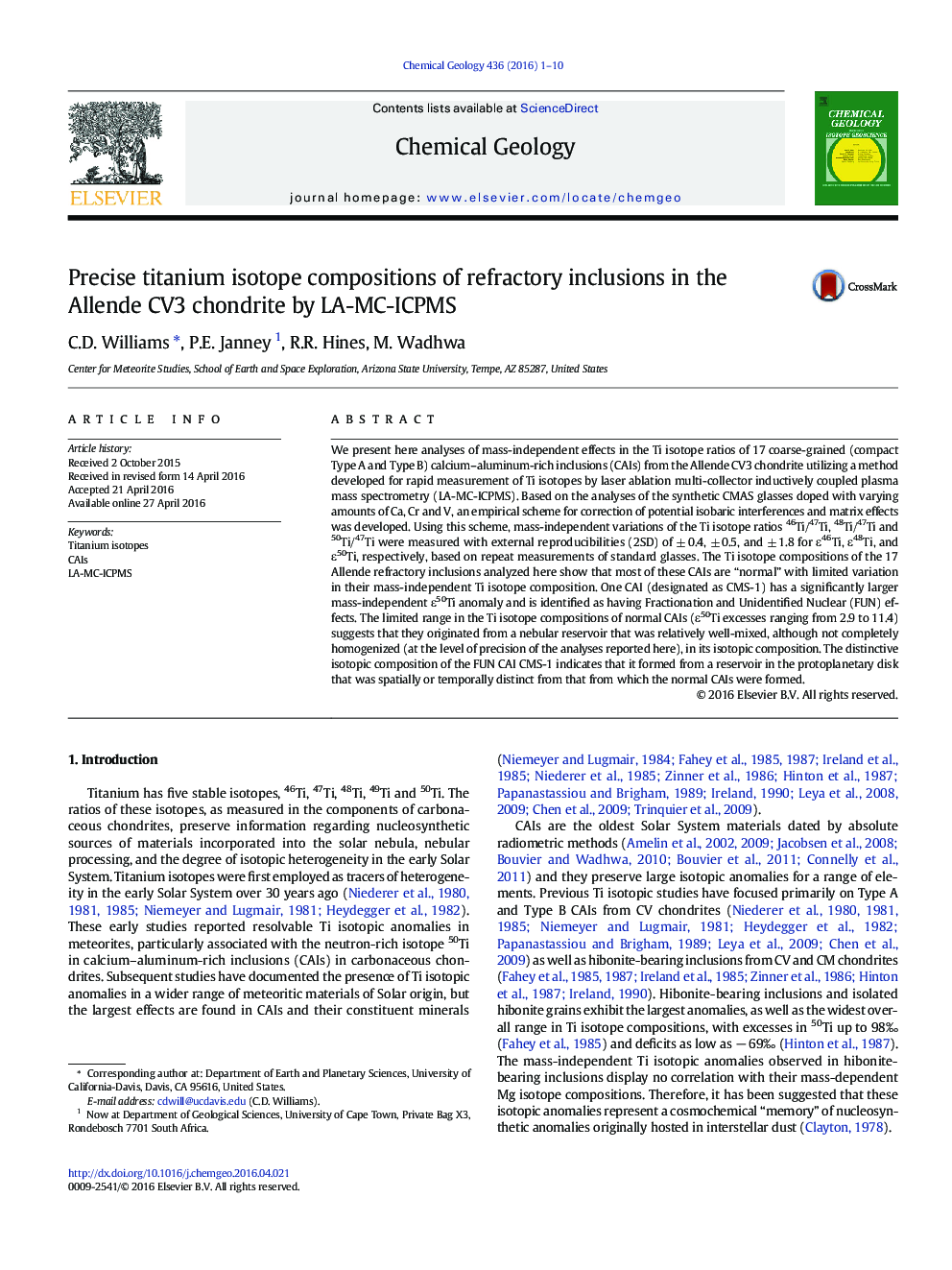| Article ID | Journal | Published Year | Pages | File Type |
|---|---|---|---|---|
| 4698305 | Chemical Geology | 2016 | 10 Pages |
We present here analyses of mass-independent effects in the Ti isotope ratios of 17 coarse-grained (compact Type A and Type B) calcium–aluminum-rich inclusions (CAIs) from the Allende CV3 chondrite utilizing a method developed for rapid measurement of Ti isotopes by laser ablation multi-collector inductively coupled plasma mass spectrometry (LA-MC-ICPMS). Based on the analyses of the synthetic CMAS glasses doped with varying amounts of Ca, Cr and V, an empirical scheme for correction of potential isobaric interferences and matrix effects was developed. Using this scheme, mass-independent variations of the Ti isotope ratios 46Ti/47Ti, 48Ti/47Ti and 50Ti/47Ti were measured with external reproducibilities (2SD) of ± 0.4, ± 0.5, and ± 1.8 for ε46Ti, ε48Ti, and ε50Ti, respectively, based on repeat measurements of standard glasses. The Ti isotope compositions of the 17 Allende refractory inclusions analyzed here show that most of these CAIs are “normal” with limited variation in their mass-independent Ti isotope composition. One CAI (designated as CMS-1) has a significantly larger mass-independent ε50Ti anomaly and is identified as having Fractionation and Unidentified Nuclear (FUN) effects. The limited range in the Ti isotope compositions of normal CAIs (ε50Ti excesses ranging from 2.9 to 11.4) suggests that they originated from a nebular reservoir that was relatively well-mixed, although not completely homogenized (at the level of precision of the analyses reported here), in its isotopic composition. The distinctive isotopic composition of the FUN CAI CMS-1 indicates that it formed from a reservoir in the protoplanetary disk that was spatially or temporally distinct from that from which the normal CAIs were formed.
